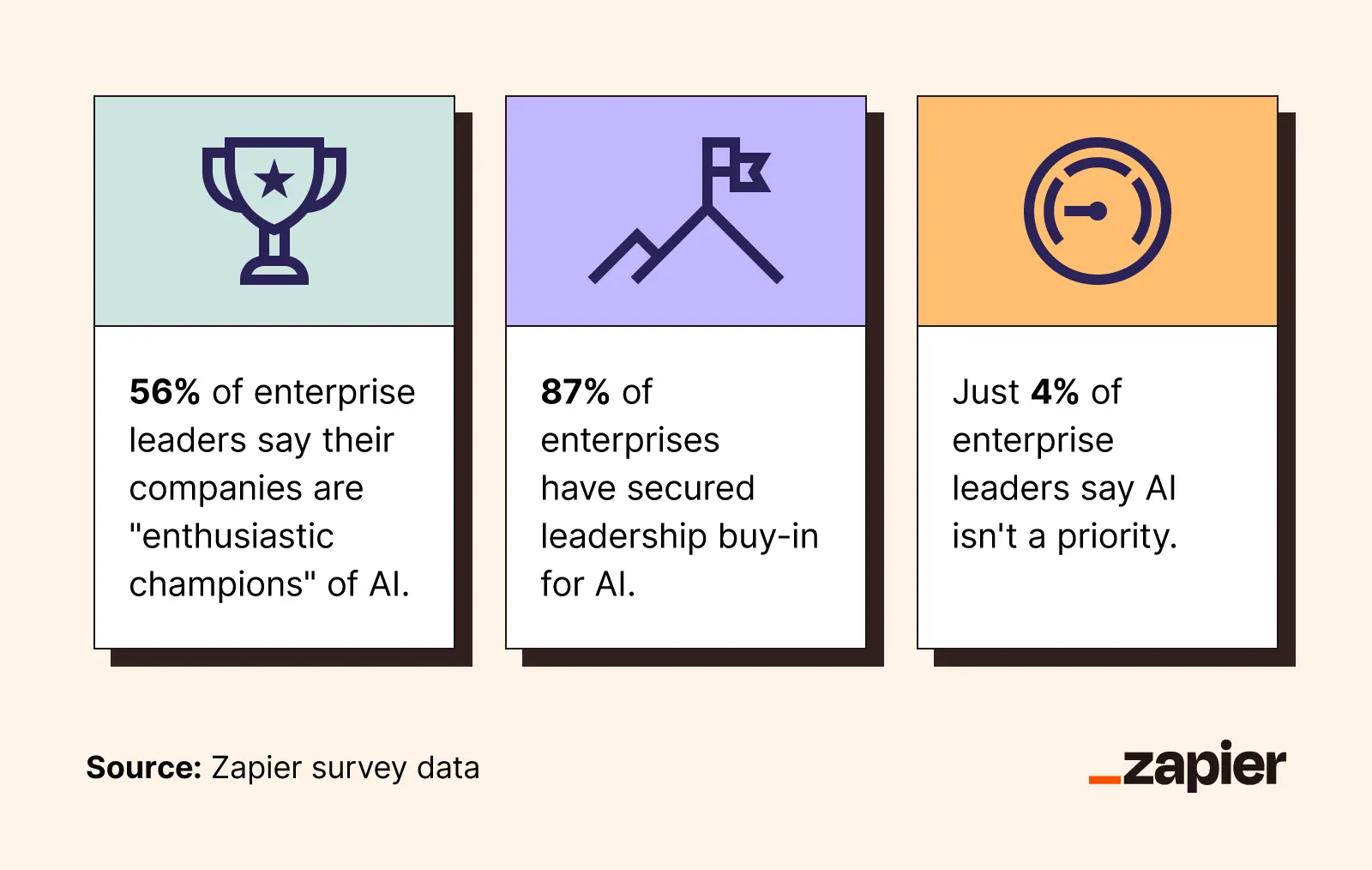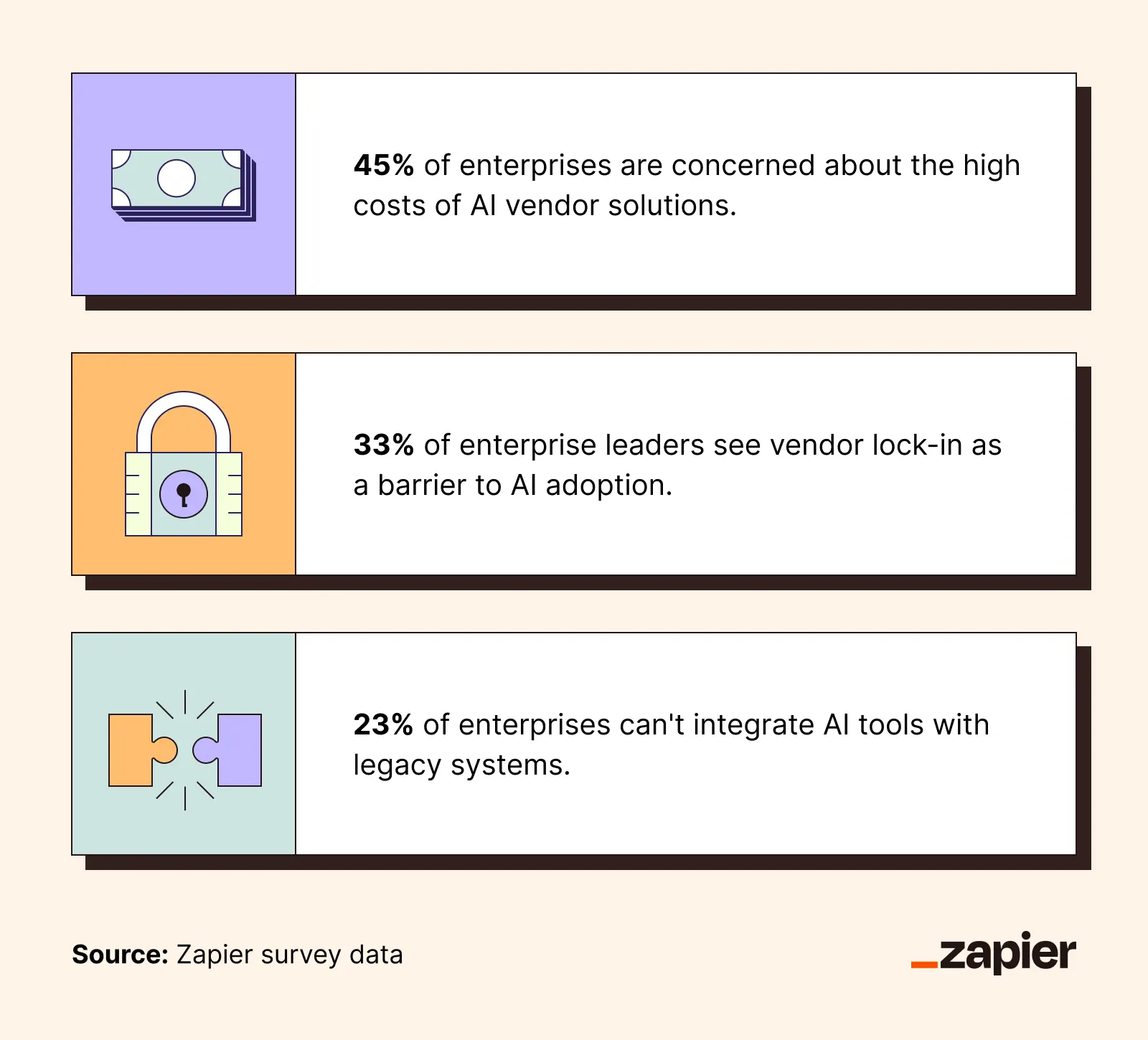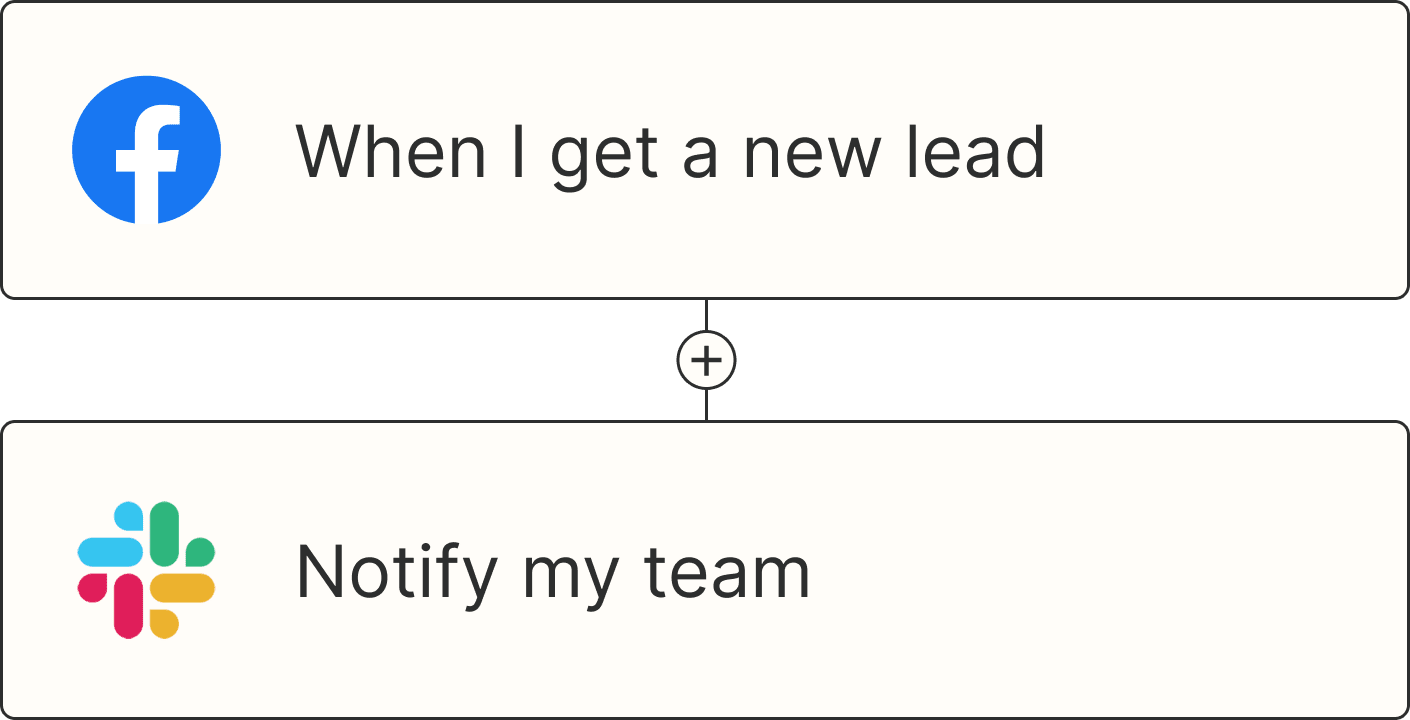I can remember a time, not so many years ago, when talking about AI meant discussing the qualities of an often-overlooked Steven Spielberg movie about a robot child. Maybe that was just my friend group, but the point stands: nobody today hears AI and thinks of Spielberg.
But even if AI has pretty much achieved complete global saturation, questions remain about just how dramatically it's changing the workplace. And the answers to these questions have big, dollar-sign-shaped implications for enterprise organizations.
In this report, I've compiled the most revealing statistics and insights about the state of AI in the enterprise. From leadership buy-in rates and industry pressure to integration barriers and future projections, these findings show how far enterprise AI has come (and how far it still has to go).
Table of contents:
Current state of AI adoption in the enterprise
There's no question that AI has transformed the workplace (I'm never going back to manual data entry). But how much has that transformation caught on at the enterprise level?
At Zapier, it's caught on so well that 97% of employees now use AI at work on a daily basis. But even if other organizations haven't progressed as quickly, most enterprise leaders say they're treating AI adoption as a top priority.

Over half of enterprise leaders (56%) say their organizations are enthusiastic champions of AI adoption. (Zapier)
Just 4% of enterprises aren't treating AI adoption as a priority, and only 3% think AI isn't "worth the hype." (Zapier)
IT departments are over 10 times more likely to push for faster AI adoption than sales, marketing, HR, and customer service teams. (Zapier)
Nearly 9 in 10 enterprises (87%) have secured leadership buy-in for AI adoption. (Zapier)
Employees are 3 times more likely to be using AI than business leaders expect. (McKinsey)
AI resistance in the enterprise
Although a majority of executives are all-in on AI adoption, there are still a number of barriers to enterprise-wide deployment, including difficulty integrating AI with legacy systems and data security risks. Overall, mature rollouts are still few and far between in the enterprise. Here are some of the key reasons why.
Less than 1 in 4 companies (21%) have adopted AI on an organizational level. (Zapier)
The top barriers to AI adoption in the enterprise are a lack of employee AI skills (35%), difficulty integrating AI with existing systems (29%), and data quality issues (29%). (Zapier)
IT and executive leadership are the two departments most likely to delay AI adoption at enterprise companies. (Zapier)
78% of executive leaders say they're struggling to integrate AI with their existing systems. (Zapier)
43% of enterprise leaders say their top concerns about AI are data breaches and security risks. (Zapier)
41% of senior executives say delayed AI adoption is making them fall behind their enterprise competitors. (Zapier)
As of January 2025, only 1% of company executives describe their generative AI rollouts as "mature." (McKinsey)
Nearly half of executives (47%) believe their enterprises are progressing too slowly in AI tool development, despite 69% investing in AI for one year or more. (McKinsey)
Only 29% of employees think AI capability building is fully supported at their organizations, and just 31% expect full support within the next three years. (McKinsey)
Zapier, the most connected AI orchestration platform, can help you get over the AI integration gap. With more than 8,000 integrations across the tools you already use, Zapier can bring AI to all your workflows and set you up for a future where enterprise-wide AI is a must instead of a "nice to have."

AI benefits in the enterprise
While some enterprises are still waiting for those sweet, sweet AI ROIs to come rolling in, others have already seen reduced costs and revenue growth thanks to their AI deployments.
63% of enterprise leaders believe AI benefits are widespread across their organization. (Zapier)
Enterprises that have fully embedded AI into their operations are more than twice as likely to see widespread benefits compared to those just running a few pilot projects (76% vs. 36%). (Zapier)
25% of enterprise leaders cite time savings as the top AI benefit—more than three times higher than cost savings at 8%. (Zapier)
In the second half of 2024, an average of 51% of enterprises using AI reported cost reductions across all areas of business. (McKinsey)
Workers with AI skills can expect to earn an average of 56% higher wages than workers with no AI expertise. (PwC)
Key AI use cases in the enterprise
Enterprises need AI to do more than draft emails or create ASMR videos of fruit eating fruit (look it up). They need AI that can help them orchestrate large-scale business processes, streamline workflows, and aid cross-department communication—all without turning their end-of-year budget spreadsheet into a doomsday scenario. Here's how enterprises are using AI today.
Across Zapier workflows, the three most popular AI use cases are customer success management, lead management, and marketing and communication. (Zapier)
Internal Zapier data shows that the roles most likely to use AI are marketing, IT, and project management, respectively. (Zapier)
Financial services companies are most likely to use AI, with about half of finance IT professionals reporting that their company has actively deployed AI. (IBM)
Creating text outputs is the most common use case (63%) for AI across all company sizes, including enterprise. Creating images (36%) and code outputs (27%) are second and third, respectively. (McKinsey)
To keep pace with your industry, you can use Zapier to integrate AI at the enterprise level without getting bogged down by IT bottlenecks or clashes with existing software. Start thinking about AI adoption on the scale of days rather than months, and catch up to the competition by orchestrating AI tools and agents across over 8,000 apps.
Enterprise AI solutions and vendors
You didn't need to be some kind of AI-Nostradamus to predict that the AI arms race would involve pretty much every software company—large and small alike—pushing an AI subscription model. Today, enterprise leaders see vendor lock-in and rising costs as real barriers to AI integration.

Enterprise leaders say their number one issue when choosing AI tools is the high cost of vendor solutions. (Zapier)
38% of enterprise leaders say they lack trust in AI vendor security, and another 33% fear vendor lock-in. (Zapier)
Around 1 in 4 enterprise leaders (23%) say they can't integrate AI tools with their existing systems. (Zapier)
The most popular AI tool in Zapier workflows is OpenAI's ChatGPT, followed by AI by Zapier, Claude, and Gemini. (Zapier)
Over 3 in 4 enterprises (78%) use or plan to use in-house AI tools instead of third-party tools due to security and data governance concerns. (Writer)
Zapier helps enterprises mitigate these risks by offering a flexible, vendor-agnostic automation platform. With Zapier, you can connect AI tools from multiple vendors without committing to a single ecosystem—maintaining control over your data, workflows, and costs. Zapier's enterprise-grade security ensures compliance and governance across every integration, while its no-code environment empowers teams to experiment with AI safely and affordably, scaling only what delivers measurable ROI.
The future of AI in the enterprise
AI has seen explosive growth over the past few years, and it's showing no signs of slowing down. Zapier data reveals that all but 1% of enterprises now have an AI strategy, which means people are learning that you can't fly by the seat of your artificially intelligent pants if you want to come out ahead.
99% of leaders at enterprise-level businesses claim their organizations have formal AI strategies in place. (Zapier)
4 in 5 enterprise leaders (81%) feel moderate to high pressure from their industry to speed up AI adoption. (Zapier)
A 2024 report found that over 4 in 5 enterprise executives (82%) expect AI adoption to grow rapidly across departments by 2026. (Writer)
Over 70% of employees expect AI to transform 30% or more of their work within the next two years. (McKinsey)
92% of companies plan to increase their investments in generative AI over the next three years (McKinsey)
By 2027, over 40% of AI-related data breaches are expected to be caused by improper AI use. (Gartner)
If your leadership is on board but you're worried about handing the AI reins to non-technical users, Zapier's no-code approach to AI automation can help. It lets business teams build and orchestrate workflows without sacrificing security and governance or having to ping IT for every minor tweak.
Bring AI to the enterprise with Zapier
If this data shows us anything, it's that leaders really want enterprise-wide AI deployment but are hitting some snags along the way. With so many vendors promoting so many different AI product offerings, it's easy to see how a team of well-meaning execs could get lost in a fog of choice paralysis and steadily ramping costs.
Not to toot our own conspicuously branded horn, but Zapier lets you scale enterprise AI across your organization in a matter of days, not months. You can use Zapier to connect your teams' existing AI apps with the rest of your tech stack and spin up AI-powered workflows without the IT bottlenecks.
Get rid of shadow AI by choosing which apps you want your teams automating with, and cut back on tool sprawl by leveraging Zapier Agents, Chatbots, and MCP instead of third-party solutions.
Learn more about what Zapier's AI tools can do for your organization.
Related reading:









